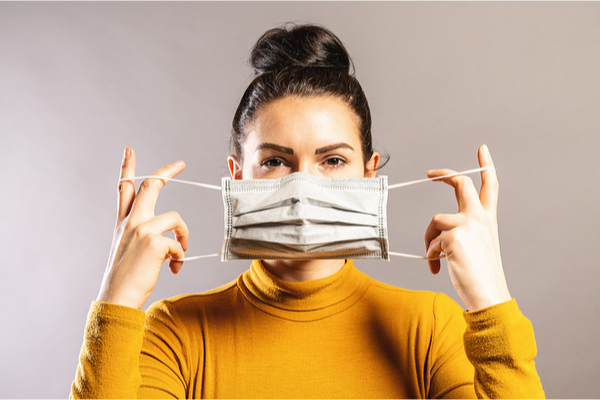As reported by The Hill, the sudden end to the mask mandate for planes, trains and buses has sparked confusion for travelers and uncertainty over how to approach travel, especially as the Biden administration recommends that Americans still wear masks on public transit.
President Biden on Tuesday told reporters “that’s up to them” when asked if people should continue to wear masks on planes. His remarks differed from the White House’s messaging since a federal judge in Florida struck down the mandate. White House officials have repeatedly said that they still recommend masks based on Centers for Disease Control and Prevention (CDC) guidance.
Biden wore a mask on Air Force One when he traveled to New Hampshire, a striking difference from the videos and images circulating of travelers taking their masks off in airports and on flights. The White House cited CDC guidance in the President’s decision to continue wearing a mask while traveling.
White House press secretary Jen Psaki pushed back on the notion that it is a confusing time for travelers. “I would dispute the notion that people are confused, we are here to alleviate their confusion. The CDC continues to advise and recommend masks on airplanes,” she said on Air Force One on Tuesday. “We’re abiding by the CDC recommendations, the president is, and we would advise all Americans to do that.”
Major U.S. airlines and Amtrak stopped enforcement of mask wearing on Monday evening. Uber and Lyft have also dropped their mask requirements and some major airports like San Francisco International Airport and Dallas-Fort Worth Airport have moved to make masks optional. “We are moving to a different stage of the pandemic here. It’s not about top-down mandates but rather about the government empowering individuals to make the best decision for themselves,” said Leana Wen, a public health professor at George Washington University.
She said that people should understand that even though they are not required to wear a mask, it doesn’t necessarily mean that they shouldn’t. “The most challenging will be for two groups,” she said. “One is individuals who are at very high risk for severe illness if they contract COVID-19 themselves and also for families with very young children, who are too young to be unvaccinated and maybe even too young to mask.”
The mask mandate has been a part of travel since early in the pandemic, when a number of major U.S. airlines put mandates in place well before Biden even took office. At the time, unions that represent flight attendants and pilots, as well as major airports, were calling for a nationwide rule.
Flash forward two years, and the airlines, who throughout the pandemic have been dealing with a rise in unruly passengers — some of them angered by mask mandates — are very ready to move on. “U.S airlines have been strong advocates for eliminating pandemic-era policies and are encouraged by the lifting of the federal transportation mask mandate,” A4A, which represents major U.S. airlines, said in a statement.
The nation’s largest flight attendant union also asked for time for airlines and airports to implement the new masking rules for travelers. “In aviation operations, it is impossible to simply flip a switch from one minute to the next. It takes a minimum of 24-48 hours to implement new procedures and communicate this throughout the entire network,” the Association of Flight Attendants (AFA) said in a statement. AFA President Sara Nelson noted that the federal government could appeal the ruling and called for a “focus on clear communication so that flight attendants and other frontline workers are not subject to more violence created by uncertainty and confusion.”
Apparently, someone at the Justice Department was listening, because on April 20, at the CDC’s request, the Justice Department appealed the ruling from a federal judge in Florida that voided the nation’s mask mandate for travelers taking public transportation, including airplanes and trains. “It is CDC’s continuing assessment that at this time an order requiring masking in the indoor transportation corridor remains necessary for the public health,” the agency said April 20. “CDC believes this is a lawful order, well within CDC’s legal authority to protect public health.”
The CDC’s statement added “wearing masks is most beneficial in crowded or poorly ventilated locations, such as the transportation corridor.” The CDC’s recommendation to appeal the ruling aims to both keep the mandate in place and protect the CDC’s authority in future outbreaks. The appeal comes with risks for the agency: If the Florida ruling is ultimately upheld, it could permanently weaken the CDC’s authority to impose such mandates in the future.
The legal moves come as nationwide COVID-19 cases rise. The U.S. daily average for new cases on April 20 was 43,357, a 49 percent increase over the last 14 days, data from The New York Times shows.
—
Photo Credit: r.classen / Shutterstock.com
